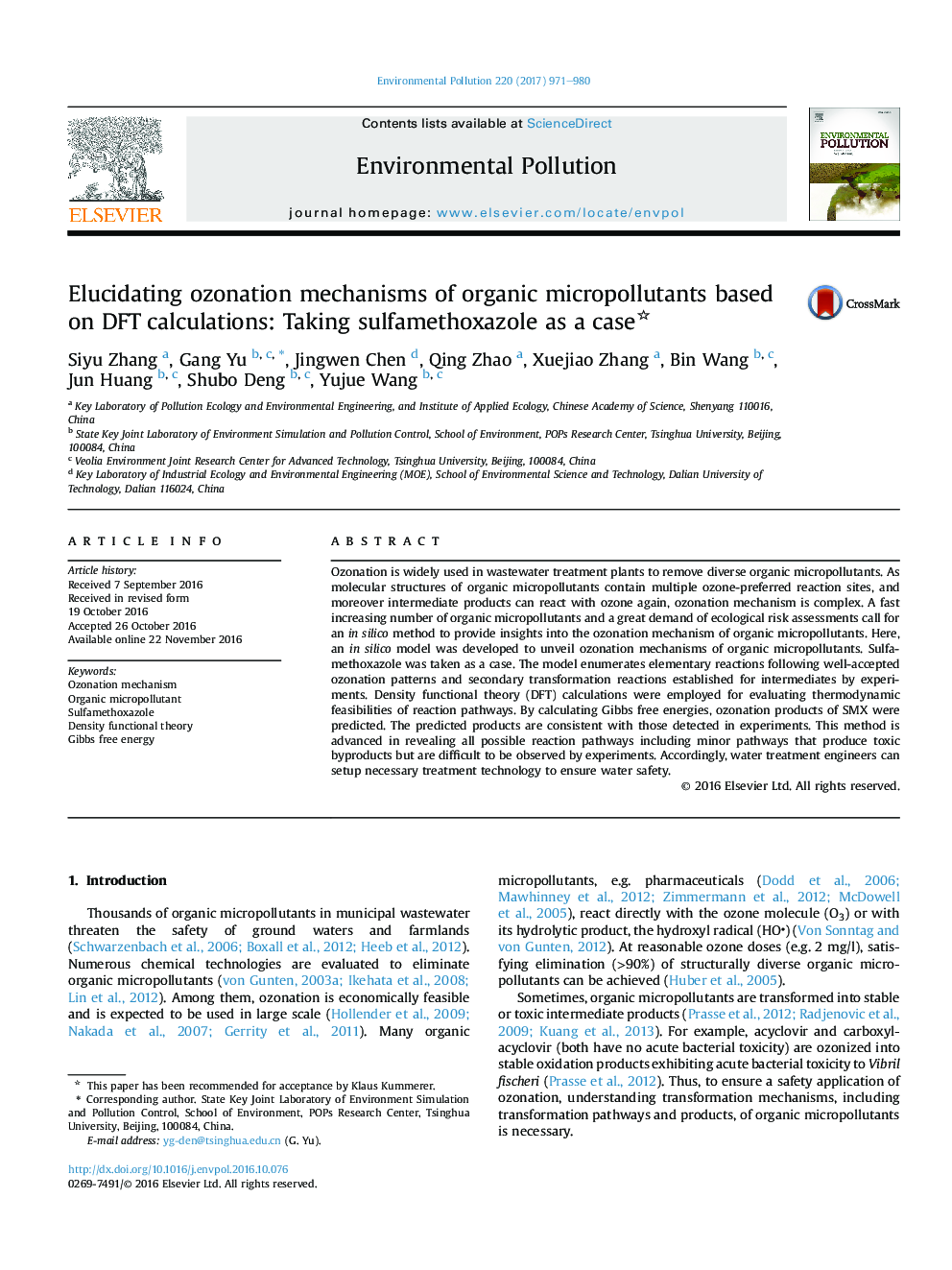| Article ID | Journal | Published Year | Pages | File Type |
|---|---|---|---|---|
| 5749526 | Environmental Pollution | 2017 | 10 Pages |
â¢An in silico method was developed to assess ozonation pathways and products.â¢The method is mechanism based, easy operating and suitable for programming.â¢Ozonation pathways and products of sulfamethoxazole were assessed as a case.â¢Predicted intermediate products were verified by experimental observations.â¢The method predicts minor pathways or products difficultly observed by experiments.
Ozonation is widely used in wastewater treatment plants to remove diverse organic micropollutants. As molecular structures of organic micropollutants contain multiple ozone-preferred reaction sites, and moreover intermediate products can react with ozone again, ozonation mechanism is complex. A fast increasing number of organic micropollutants and a great demand of ecological risk assessments call for an in silico method to provide insights into the ozonation mechanism of organic micropollutants. Here, an in silico model was developed to unveil ozonation mechanisms of organic micropollutants. Sulfamethoxazole was taken as a case. The model enumerates elementary reactions following well-accepted ozonation patterns and secondary transformation reactions established for intermediates by experiments. Density functional theory (DFT) calculations were employed for evaluating thermodynamic feasibilities of reaction pathways. By calculating Gibbs free energies, ozonation products of SMX were predicted. The predicted products are consistent with those detected in experiments. This method is advanced in revealing all possible reaction pathways including minor pathways that produce toxic byproducts but are difficult to be observed by experiments. Accordingly, water treatment engineers can setup necessary treatment technology to ensure water safety.
Graphical abstractDownload high-res image (184KB)Download full-size image
